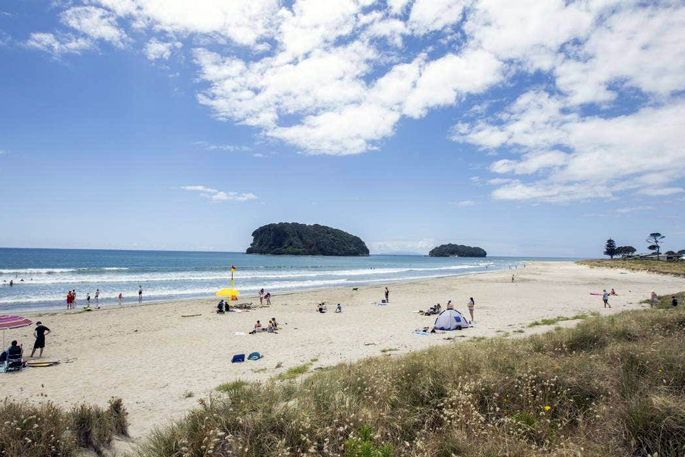If you’ve spent the past couple of weeks lounging on a beach, the idea of buying a bach might have crossed your mind.
But while a seaside holiday house might be peak Kiwiana, the price of coastal properties has pushed it beyond the reach of many people in recent decades.
Corelogic analysis of 16 popular beach areas shows significant house price movement over the past five years.
Kaiti, in Gisborne, experienced a 97.7 per cent increase in median value over the five years to the end of October, although it remained the cheapest of the areas surveyed with a median price of $442,003.
Whangamata had the biggest price drop over the year to October with values down 10.5 per cent, although they recovered eight per cent over the quarter. There, the average was $1.087 million.
Other million-dollar bach areas included Mangawhai, in Northland, with a median $1.14m , Waihi, at $1.24m, Omaha at $2.36m, Mount Maunganui at $1.09m, Wanaka at $1.63m, Waiheke at $2.54m, Wainui at $1.3km and Raglan at $1.009m.
The fastest growth over the past three months was in Coromandel, up 11 per cent, and the biggest drop was in Mount Maunganui, down 4.9 per cent. Activity was strongest in Paraparaumu, where 3.9 per cent of all properties sold in the last 12 months.
ANZ economist Andre Castaing says he expects house prices in “beachy” towns to grow more slowly than those in the main urban centres.
“Areas close to the beach experienced a lot of housing demand in the pandemic. Covid meant people had to holiday in New Zealand and were concerned about being locked-down in a large city, increasing demand for property in holiday hotspots.
“A lot of this demand has reduced, as people resume their normal consumption and travel patterns. This makes it less likely for house prices in holiday spots to keep pace with those in urban locations, especially given that urban locations tend to receive outsized share of inbound migration, supporting house prices there.
“Baches are a luxury. High interest rates, the elevated cost of living and rising unemployment mean many people won’t be willing to spend money on a holiday home right now. While these economic forces affect house prices in all areas, property in beachside towns may be more susceptible to the economic cycle.”
But Kelvin Davidson, chief property economist at CoreLogic, is less certain there will be a difference.
“I’m not convinced there are any particular reasons why ‘beach’ property should perform markedly different to anything else over the next few years, at least if you look at fundamentals such as the labour market, migration, or credit cost/availability. It’s very hard to look at past cycles down at suburb/beach level and then make generalisations, but there are some hints that beach property fared a little better post-Covid when nobody could travel.
“Of course, the fundamentals can sometimes be trumped by other factors – if people simply want a beach property, that might push prices up faster. But I think climate change is going to become much more important too, which may tend to hold down value growth over the long term for these types of properties – I don’t think changing insurance cost or availability is having a clear impact yet, but that could be a vital factor over the coming decades.”
The cheapest bach listed on Trade Me this week was a hut in a Waimate fishing village, which could not be used as a permanent residence and did not have a bathroom, for $55,000.



0 comments
Leave a Comment
You must be logged in to make a comment.